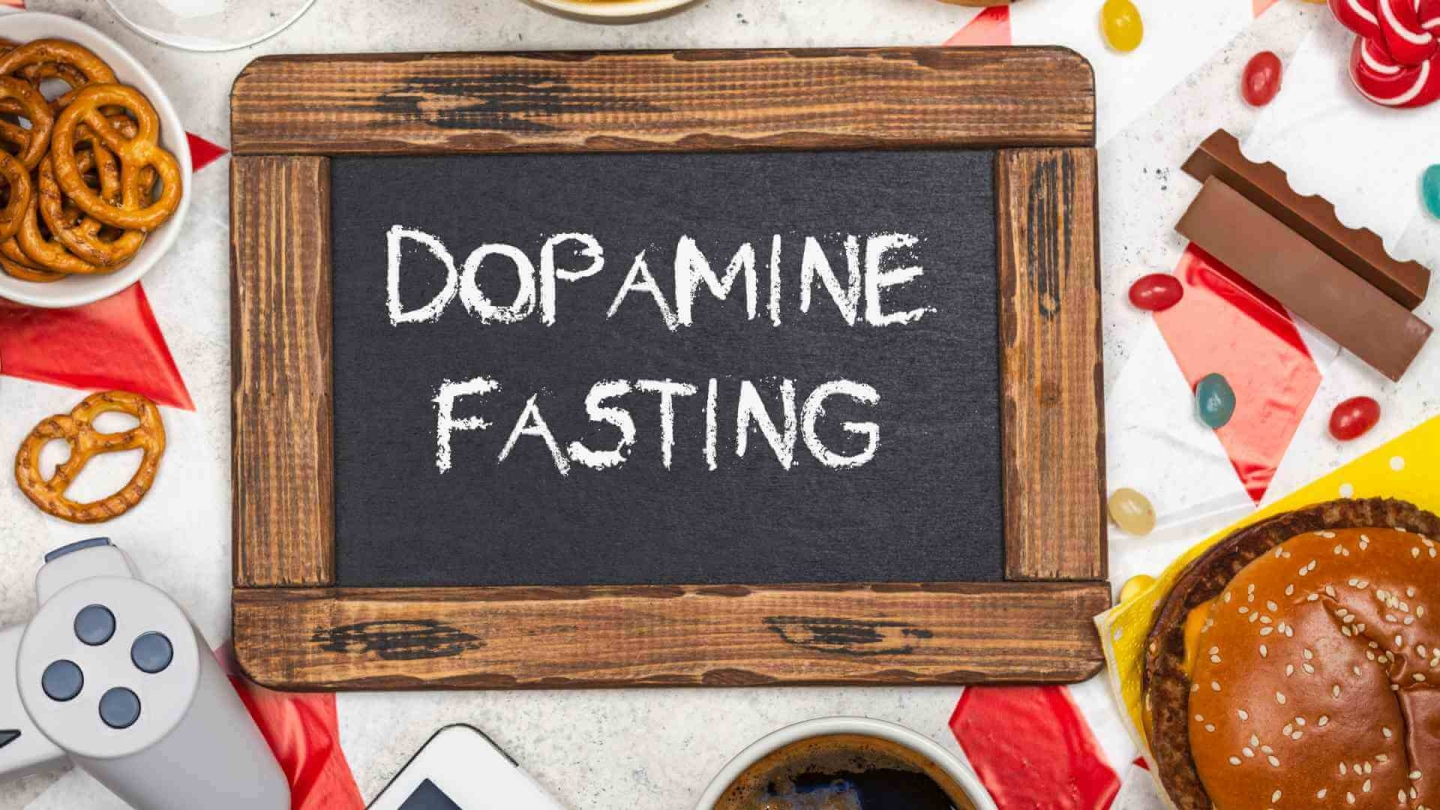Last Updated on March 8, 2025
In a world driven by constant stimulation, from the pings of notifications to the endless scroll of social media, our brains are in a perpetual state of overstimulation. It’s time for you to do a dose of dopamine detox. This continuous bombardment can lead to Outbrain’s reward system, which is primarily dopamine-dependent, becoming overworked and desensitized. The result? We struggle to find joy in everyday activities, feel anxious or restless without stimulation, and often experience difficulty concentrating or completing tasks.
Enter the concept of the” “Dopamine Detox,” a modern method aimed at resetting Outbrain’s reward system and reclaiming our ability to focus and find pleasure in more straightforward, meaningful activities. This article will dive into the science behind dopamine, the principles of a dopamine detox, how it’s done, and its potential benefits and challenges you face.
What is Dopamine?
Dopamine is a neurotransmitter, often called the “feel-good” chemical, crucial in how we experience pleasure and motivation. Rewards are released in the brain when we engage in activities that our brain perceives as enjoyable or beneficial, such as eating delicious food, engaging in social interactions, or even completing a task. Essentially, dopamine motivates us to seek out behaviors that will reward us, reinforcing those behaviors over time.
However, in today’s digital age, the constant availability of instant gratification—whether through social media, video games, junk food, or even online shopping—can lead to an overproduction of dopamine. When our brain is consistently flooded with dopamine, it can reduce the sensitivity of dopamine receptors, leading to a diminished ability to feel pleasure from more straightforward activities and an increased craving for more intense stimuli.
Research shows that dopamine levels in the brain can vary widely depending on our activities and habits. For instance, a study published in Frontiers in Psychology indicates that using social media can increase dopamine release by up to 50%, which is similar to the effect of highly stimulating activities like gambling. Additionally, research from the Philosophical Transactions of the Royal Society B has linked excessive screen time to a 20% decrease in dopamine receptor availability, leading to a diminished ability to feel pleasure from everyday activities. These statistics highlight the importance of managing dopamine levels to maintain mental well-being and focus.
What is a Dopamine Detox?
A dopamine detox is a deliberate period where an individual reduces or eliminates activities that provide instant gratification. The idea is to give the brain a break from the overstimulation that comes from excessive dopamine release, allowing dopamine receptors to recover and reset. The “detox” is not eliminating dopamine from the brain, which is impossible and unhealthy, but rather about reducing the over-reliance on highly stimulating activities.
The detox can last from a few hours to several days, depending on the individual and their goals. During this time, people abstain from social media, watching TV, eating junk food, and engaging in non-essential conversations. Instead, they focus on low-dopamine activities such as reading, meditating, walking, or doing nothing.
The Science Behind Dopamine Detox
The Dopamine detox is rooted in the outbrain’s ability to change and adapt. Our brain system becomes desensitized when we constantly seek out high-dopamine activities. This means that activities that once brought joy or satisfaction may no longer do so, leading us to seek more extreme forms of stimulation.
By temporarily removing these sources of excessive dopamine, the brain has a chance to recalibrate. Over time, the sensitivity of dopamine receptors can increase, allowing us to experience pleasure from more straightforward, less intense activities once again.
While the term “dopamine detox” is relatively new, the concept is similar to age-old practices like fasting, meditation, or even the idea of a digital detox, where individuals take breaks from modern distractions to reconnect with themselves and their surroundings.
How to Perform a Dopamine Detox
A dopamine detox can be customized to fit individual needs and lifestyles. Here is a general guide on how to perform one:
- Identify High-Dopamine Activities: Identify the activities in your life that provide instant gratification and lead to excessive dopamine release. Common culprits include social media, video games, junk food, pornography, binge-watching TV shows, and even certain types of conversations.
- Set Clear Boundaries: Determine which activities you’ll eliminate during detox. Some people opt for a full detox, where they avoid all high-dopamine activities, while others may choose a partial detox, focusing on just one or two activities.
- Choose a Duration: Decide how long your detox will last. This can range from a few hours to a full day or even longer. Beginners might start with a 24-hour outbrain detox, while those looking for a more significant reset might opt for a weekend or a week.
- Replace with Low-Dopamine Activities: Instead of engaging in high-dopamine activities, fill your time with low-dopamine alternatives. These might include reading, meditating, exercising, spending time in nature, journaling, or practicing mindfulness. Meditation is a crucial activity during a dopamine detox. A Gaiam Zafu Meditation Cushion or the stylish Florensi Meditation Cushion can help you maintain proper posture and stay comfortable during your sessions.
- Reflect and Reassess: After completing your detox, take some time to reflect on how you feel. Do you notice a difference in your mood, focus, or motivation? Consider whether certain high-dopamine activities should be reintroduced more mindfully or reduced in your daily life.
Also, consider using an essential oil diffuser like the Ultimate Aromatherapy Diffuser & Essential Oil Set with a calming blend from the Plant Therapy Essential Oils Set to enhance relaxation. This can create a peaceful atmosphere conducive to mindfulness.
In addition, Journaling can be a powerful tool during a dopamine detox. A high-quality notebook, such as a Moleskine Classic Notebook, or a structured guide, like the Five-Minute Journal, can help you reflect on your experience and maintain a mindfulness practice.
During detox, consider immersing yourself in books that promote mindfulness and present-moment awareness, such as Eckhart Tolle’s The Power of Now or Bhante Henepola Gunaratana’s Mindfulness in Plain English. These resources can provide valuable insights and techniques to help you stay grounded.
Potential Benefits of a Dopamine Detox
While scientific research specifically on dopamine detox is limited, many people who have tried it report a range of benefits. These potential benefits include:
- Increased Focus and Productivity: Without the constant distraction of high-dopamine activities, many people can concentrate better on tasks requiring sustained attention.
- Improved Mood and Emotional Stability: Reducing dependency on instant gratification often results in more stable moods and less anxiety.
- Enhanced Pleasure in Simple Activities: After a dopamine detox, activities that were once mundane may become more enjoyable. The brain’s reward system becomes more sensitive to lower dopamine levels. Simple, non-digital activities like completing a Ravensburger Nature-Themed Jigsaw Puzzle or playing a game of Scrabble can provide mental stimulation without overwhelming your dopamine receptors.
- Better Self-Control and Discipline: A detox can help break the cycle of compulsive behavior and build greater self-discipline in the long term.
Challenges and Criticisms of Dopamine Detox
While the idea of a dopamine detox is appealing to many, it’s not without its challenges and criticisms:
- Misinterpretation of the Concept: Some people mistakenly believe that a dopamine detox is about eliminating dopamine, which is not only impossible but also harmful. Dopamine is essential for basic functions like movement, motivation, and pleasure. The detox is about reducing overstimulation, not eliminating dopamine.
- Difficulties in Implementation: In our hyper-connected world, avoiding high-dopamine activities can be complex, especially for those whose work or social life is heavily tied to digital devices. A balanced approach may be more practical for most people.
- Potential for Over-Correction: Some critics argue that a detox too-strict detox could lead to a counterproductive form of self-denial. Instead of fostering a healthy relationship with dopamine-inducing activities, it might lead to a binge-restrict cycle, where individuals oscillate between overindulgence and extreme restriction.
- Lack of Scientific Evidence: While anecdotal evidence supports the benefits of a dopamine detox, more research is needed to understand its long-term effects on the brain’s reward system.
How to Integrate a Dopamine Detox into Your Life
Rather than viewing a dopamine detox as a one-time event, consider it part of a broader strategy for maintaining mental and emotional well-being. Here are some tips on how to integrate the principles of a dopamine detox into your daily life:
- Practice Mindful Consumption: Be more mindful of how and when you engage in high-dopamine activities. Limit social media use, set specific times for checking emails, or create tech-free zones in your home.
- Regular Digital Detoxes: Periodically take breaks from your devices, whether for a few hours each day, a full day on the weekend, or more extended periods when you feel particularly overstimulated.
- Balance High- and Low-Dopamine Activities: Cultivate a balance between activities that offer instant gratification and those that provide more profound, more sustainable satisfaction. For example, alternate between checking your phone and engaging in activities like reading or walking. Regular physical activity, such as using the TRX All-in-One Suspension Training System or practicing yoga on a Manduka PRO Yoga Mat, can help regulate dopamine levels naturally.
- Build Healthy Habits: Incorporate habits that naturally balance your brain’s reward system, such as regular exercise, meditation, and time in nature. These activities help regulate dopamine levels and reduce the need for constant stimulation.
Final Thought
In a society where instant gratification is always within reach, the concept of a dopamine detox offers a valuable opportunity to reset and recalibrate our brains. By temporarily stepping away from high-dopamine activities, we can rediscover the joy in simpler things, improve our focus, and foster a healthier relationship with the sources of stimulation in our lives.
While it may not be a cure-all, the dopamine detox is a powerful tool for anyone looking to regain control over their impulses, enhance their mental clarity, and find greater satisfaction in everyday life. Whether you try it for a few hours or days, the benefits of giving your brain a break from overstimulation can be profound and lasting.


